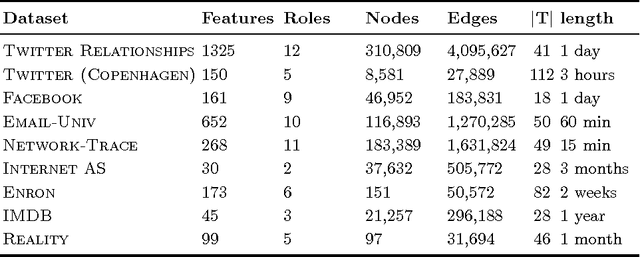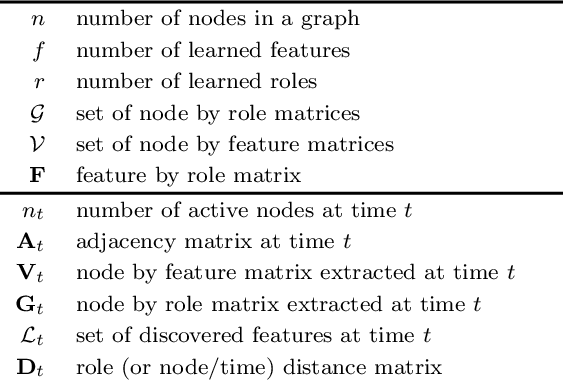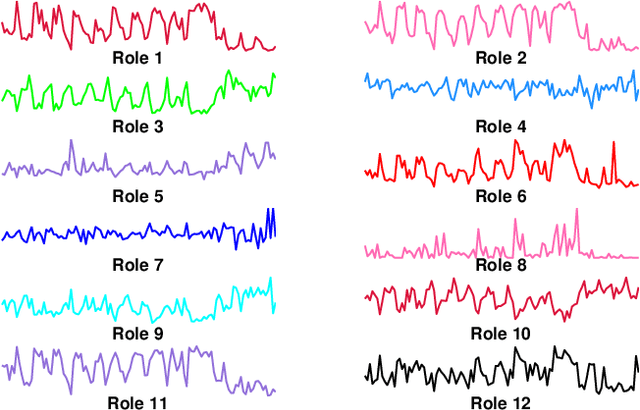Keith Henderson
Dynamic Behavioral Mixed-Membership Model for Large Evolving Networks
May 09, 2012



Abstract:The majority of real-world networks are dynamic and extremely large (e.g., Internet Traffic, Twitter, Facebook, ...). To understand the structural behavior of nodes in these large dynamic networks, it may be necessary to model the dynamics of behavioral roles representing the main connectivity patterns over time. In this paper, we propose a dynamic behavioral mixed-membership model (DBMM) that captures the roles of nodes in the graph and how they evolve over time. Unlike other node-centric models, our model is scalable for analyzing large dynamic networks. In addition, DBMM is flexible, parameter-free, has no functional form or parameterization, and is interpretable (identifies explainable patterns). The performance results indicate our approach can be applied to very large networks while the experimental results show that our model uncovers interesting patterns underlying the dynamics of these networks.
Role-Dynamics: Fast Mining of Large Dynamic Networks
Mar 09, 2012



Abstract:To understand the structural dynamics of a large-scale social, biological or technological network, it may be useful to discover behavioral roles representing the main connectivity patterns present over time. In this paper, we propose a scalable non-parametric approach to automatically learn the structural dynamics of the network and individual nodes. Roles may represent structural or behavioral patterns such as the center of a star, peripheral nodes, or bridge nodes that connect different communities. Our novel approach learns the appropriate structural role dynamics for any arbitrary network and tracks the changes over time. In particular, we uncover the specific global network dynamics and the local node dynamics of a technological, communication, and social network. We identify interesting node and network patterns such as stationary and non-stationary roles, spikes/steps in role-memberships (perhaps indicating anomalies), increasing/decreasing role trends, among many others. Our results indicate that the nodes in each of these networks have distinct connectivity patterns that are non-stationary and evolve considerably over time. Overall, the experiments demonstrate the effectiveness of our approach for fast mining and tracking of the dynamics in large networks. Furthermore, the dynamic structural representation provides a basis for building more sophisticated models and tools that are fast for exploring large dynamic networks.
 Add to Chrome
Add to Chrome Add to Firefox
Add to Firefox Add to Edge
Add to Edge